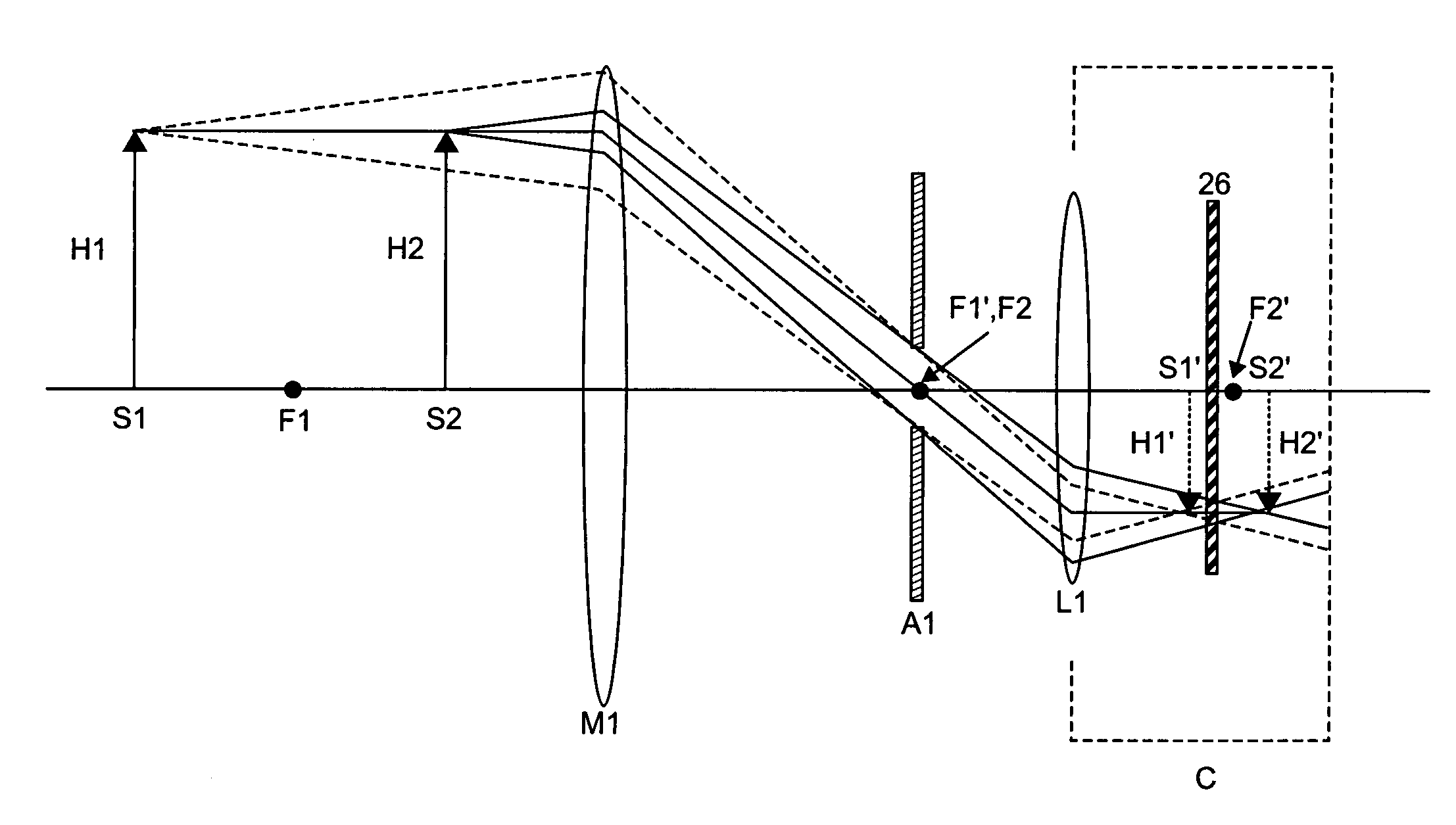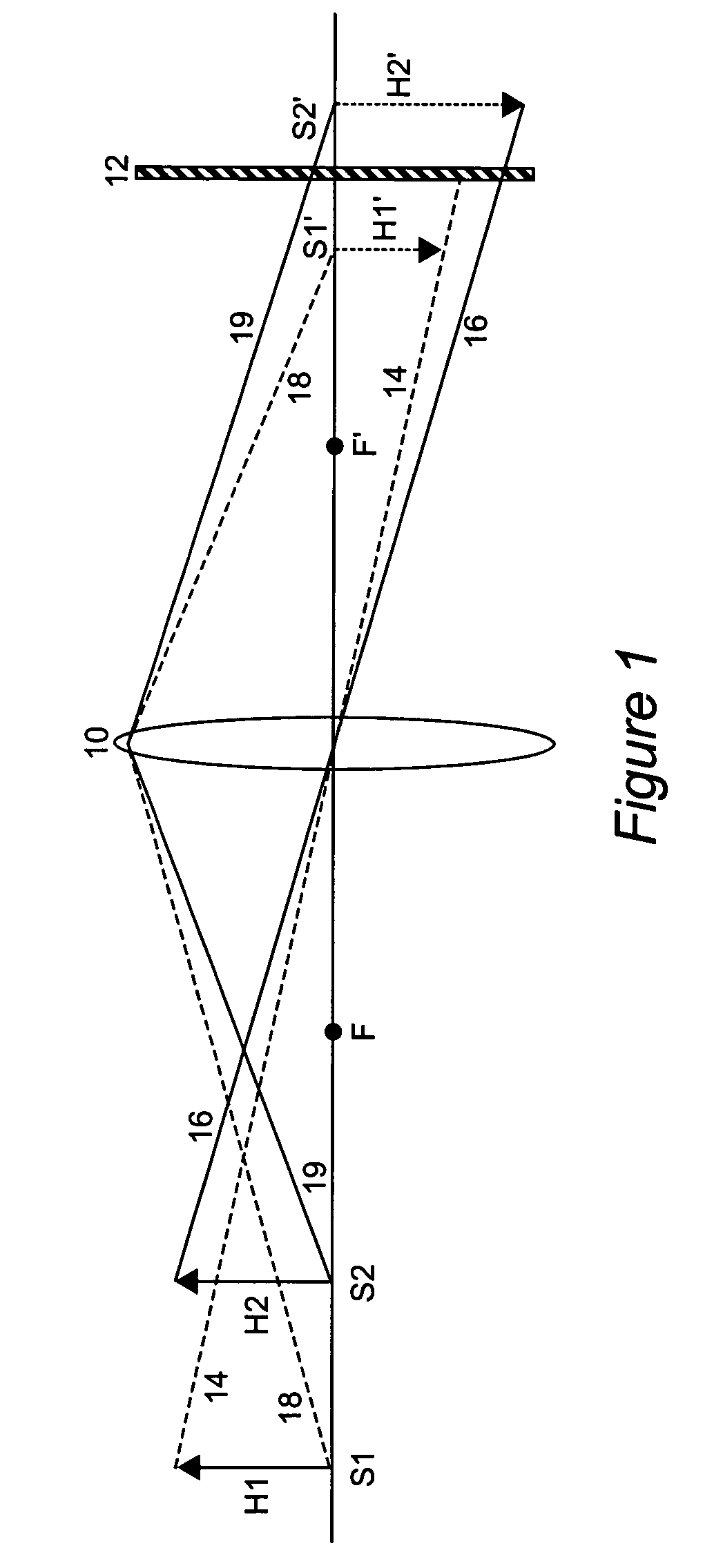Wide-field extended-depth doubly telecentric catadioptric optical system for digital imaging
a catadioptric optical system and wide field technology, applied in the field of automatic imaging optical systems, can solve the problems of only being able to correct the distortion of the optical system, applying some types of optical systems, and exhibiting substantial distortion that increases, etc., to achieve constant magnification and resolution, wide field of view
- Summary
- Abstract
- Description
- Claims
- Application Information
AI Technical Summary
Benefits of technology
Problems solved by technology
Method used
Image
Examples
Embodiment Construction
[0037]Referring now to the drawings, and more particularly to FIG. 1, there is schematically shown a conventional lens system 10, having front and rear focal points F, F′, imaging objects H1, H2 of the same size at different locations S1, S2 which are different axial distances from lens 10. It is understood that H1 and H2 can be representations of the same object positioned at different depths along the optical axis and are shown simultaneously for purposes of comparison. They could also represent two points on a hollow object that are axially separated but of the same height. By following the principal rays from the upper ends of the objects H1, H2 it is seen that the image H1′ of object H1 at location S1 at the greater of the two axial distances is focused at location S1′ a short distance behind rear focal point F′. By similarly following the illustrated principal ray from the upper end of object H2, it can be seen that image H2′ is focused at a greater distance behind rear focal ...
PUM
 Login to View More
Login to View More Abstract
Description
Claims
Application Information
 Login to View More
Login to View More - R&D
- Intellectual Property
- Life Sciences
- Materials
- Tech Scout
- Unparalleled Data Quality
- Higher Quality Content
- 60% Fewer Hallucinations
Browse by: Latest US Patents, China's latest patents, Technical Efficacy Thesaurus, Application Domain, Technology Topic, Popular Technical Reports.
© 2025 PatSnap. All rights reserved.Legal|Privacy policy|Modern Slavery Act Transparency Statement|Sitemap|About US| Contact US: help@patsnap.com



